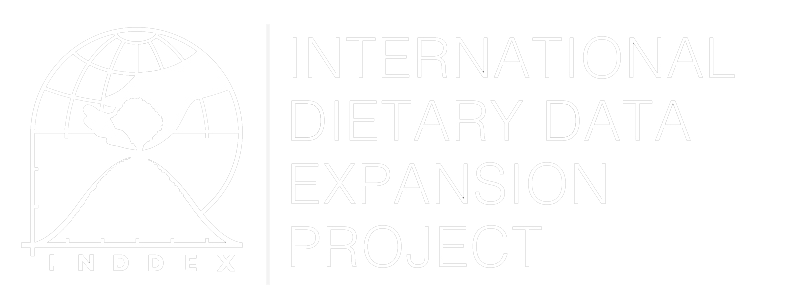Summary
Household Consumption and Expenditure Surveys (HCES)—also referred to by a variety of other names including Household Income and Expenditure Surveys (HIES), Household Budget Surveys (HBS), or Living Standards Measurement Surveys (LSMS)—are complex surveys conducted on a nationally representative sample to characterize important aspects of household socioeconomic conditions (Coates et al., 2012). Typically, HCES are conducted every 3-5 years in a range of countries and cover 7,000 to 20,000 households to provide a statistically representative sample (Fiedler et al., 2012). Most HCES are implemented by national statistical agencies, often with technical assistance from the World Bank’s Living Standard Measurement Study (LSMS) group.
The results of HCES have wide-ranging utility. Their primary purpose is to provide information for poverty monitoring, the calculation of national accounts, and as an input for consumer price indices (Smith et al., 2014). However, there is increasing interest in using the food consumption module from HCES as a source of nationally representative data for assessing food security and nutrition. Furthermore, HCES collect a wide range of data on determinants and outcomes (e.g. socioeconomic status, education), potentially enriching food security and nutrition analyses. Based on existing research there is wide consensus that HCES, with carefully designed consumption modules, are a valuable source of data for household-level food security and nutrition measurement (Russell et al., 2018; Zezza et al., 2017).
One of the major drawbacks of using HCES is that the consumption modules are heterogeneous across countries, which means that not all HCES data lend themselves to the same food security and nutrition analyses, and comparisons across countries can be inaccurate. Some of the key ways in which the consumption modules differ across surveys include: 1) the length of the recall period; 2) whether data are collected for acquisition, consumption, or both; 3) whether there is information on the mode of food acquisition (purchases, own production, and in-kind); 4) whether or not information on food consumed away from home is collected and in what form; 5) whether food detail is collected through open recall or a list, and, if a list, how disaggregated and specific the foods and food groups are; and 6) the use of non-standard units without available conversions (Smith et al., 2014). For example, if the food consumption module has a short food list with aggregated items making it difficult to match with a food composition database, excludes food away from home, and has a long recall period (>14 days) then the consumption module may not be adequate for measuring certain food security and nutrition indicators, such as total household-level calorie availability.
While the ‘C’ in HCES stands for ‘consumption’, HCES collect data on acquisition, consumption, or both. While consumption data refers to the food consumed by the household, acquisition data refers to the food acquired through purchases, own-production, and in-kind. Acquisition data serve as a proxy for food consumption, as households may build food stocks or consume food stocks during the reference period, as compared to consumption, which collect data on food consumed in a specified period. This is an important point because some foods (e.g. grains) are not perishable and can be stored, therefore some households may be drawing down stocks acquired to meet current consumption, while other households may be accumulating stocks that will be consumed after that period (Smith et al., 2014). Another type of HCES collects a combination of acquisition and consumption data, wherein households report what they acquired through purchases and what they consumed from own-production and transfers (Smith, 2003). Food consumption estimates generated from acquisition data or a combination of both acquisition and consumption data are typically referred to as 'apparent consumption' in the literature to distinguish from actual consumption (Fiedler & Mwangi, 2016).
The World Bank Microdata Library has the most comprehensive and publicly accessible repository of HCES data. Data also can be accessed—often for a fee—from countries’ National Statistics Office, though each country has its own policies and procedures regarding data sharing. The International Household Survey Network (IHSN) is an informal network to promote data standards and dissemination where additional information (e.g. survey catalogs, guidelines, and software) on existing HCES can be found (IHSN, 2018).
Strengths:
- Typically nationally representative and sometimes representative at provincial and district levels
- Typically collected every 3-5 years, allowing for an examination of trends
- Food consumption data from HCES are an important source of information on food security and nutrition
- Include a wide range of data on determinants and outcomes (e.g. socioeconomic status, education), enabling various analytical options.
Weaknesses:
- Due to issues with the structure of some consumption modules (e.g. no information on food consumed away from home), the data may not be useful for certain food security and nutrition analyses
- Some HCES only measure 'apparent consumption' (based on acquisition data), not actual consumption
- The food list is not always designed with the level of detail needed to make exact matches between the food items in the food list and a food composition database
- Recall periods in HCES vary from 1 to 365 days, with long recall periods (>2 weeks) raising concern about reliability and recall bias
- Household-level data from HCES do not allow for measurement of individual-level food security and nutrition indicators
- Many HCES do not capture seasonal variation
